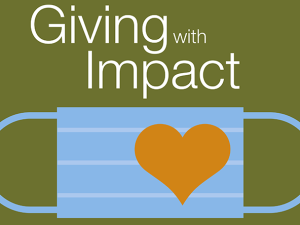The COVID-19 pandemic has cut into noprofits’ resources while increasing demand for their services. As they are asked to do more with less money and reduced  staff, what can they learn from history and data about navigating the crisis? And how can philanthropy help?
staff, what can they learn from history and data about navigating the crisis? And how can philanthropy help?
During this period of extreme financial pressures brought about as a result of the COVID-19 pandemic, many organizations in the nonprofit sector are feeling particularly squeezed as they work to continue to provide support and services to what is already an expanding client population, and at the same time that revenues from services have dried up and donations from their traditional fundraising activities have declined. Every nonprofit leader has had to respond to the pandemic and take steps to help their organization survive. Some have had to lay off staff and cut salaries and others have had to cut programs.
What does history and recent data tell us about what might happen to organizations in the nonprofit sector in the near- and long-term, and how can the philanthropic community help provide vital support to ensure that these organizations are able to continue to support their constituents? I think, we’re being challenged in terms of our understandings, because this is so unprecedented. But we know that in disasters, from 9/11 to hurricanes that we’ve studied, that giving spikes and people respond often in proportion to the severity of the disaster that we are facing. And, certainly, given the scope and the depth of what we’re facing with the pandemic, it will be interesting to talk more about the surge of response that we have seen across the philanthropic space to the particular disaster.
When we mention recessions, however, I think we see the opposite effect, especially after the great recession. It took many years, several years, for individual giving, in particular, to recover. So in recessions giving does go down, simply because the resources that we have available go down, as well. But it remains to be seen what the impact will be, ultimately, because our evidence is based on patterns that we have observed since World War II. And we may see some unprecedented behaviors, if, indeed, we’re going to break some of the patterns that we have seen since World War II.
Keep Giving and Making an Impact!!!!!!!

